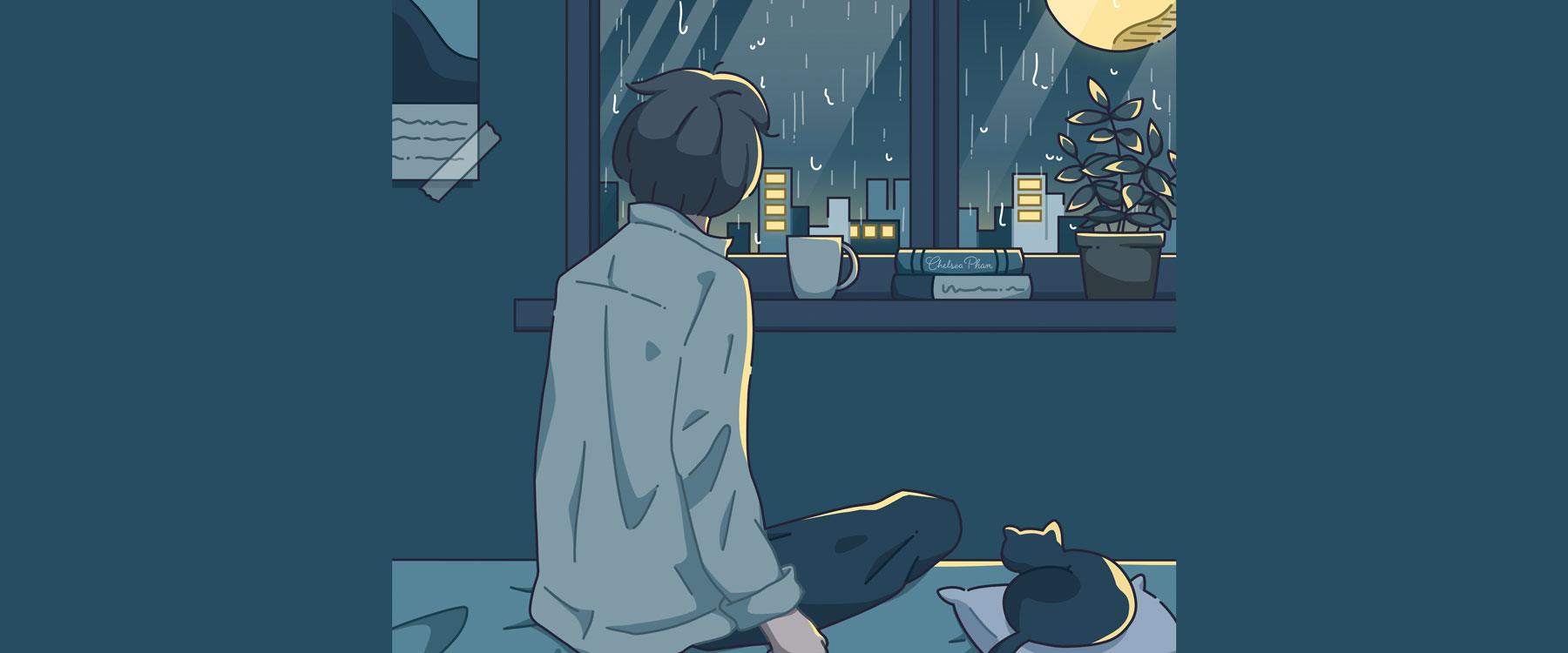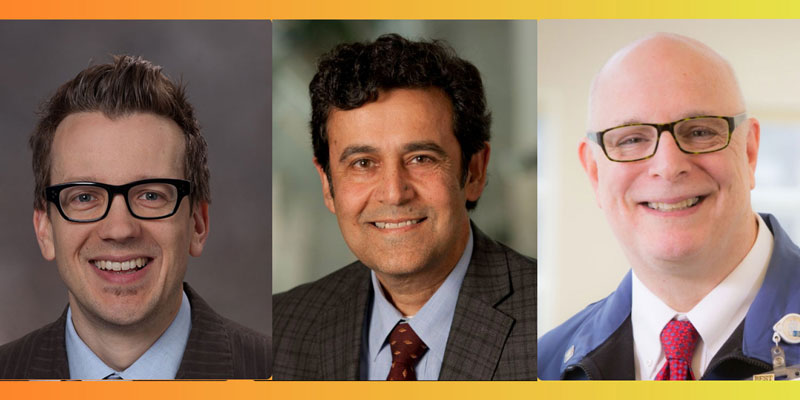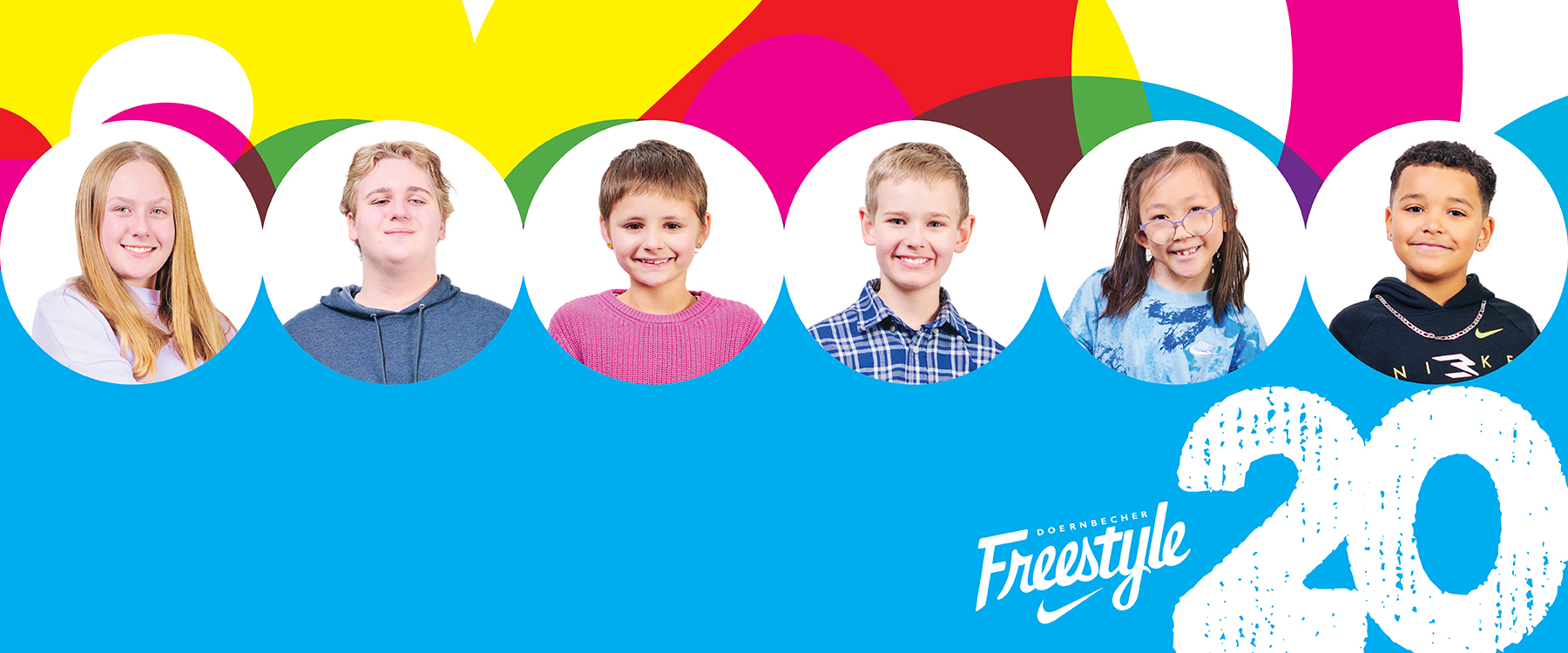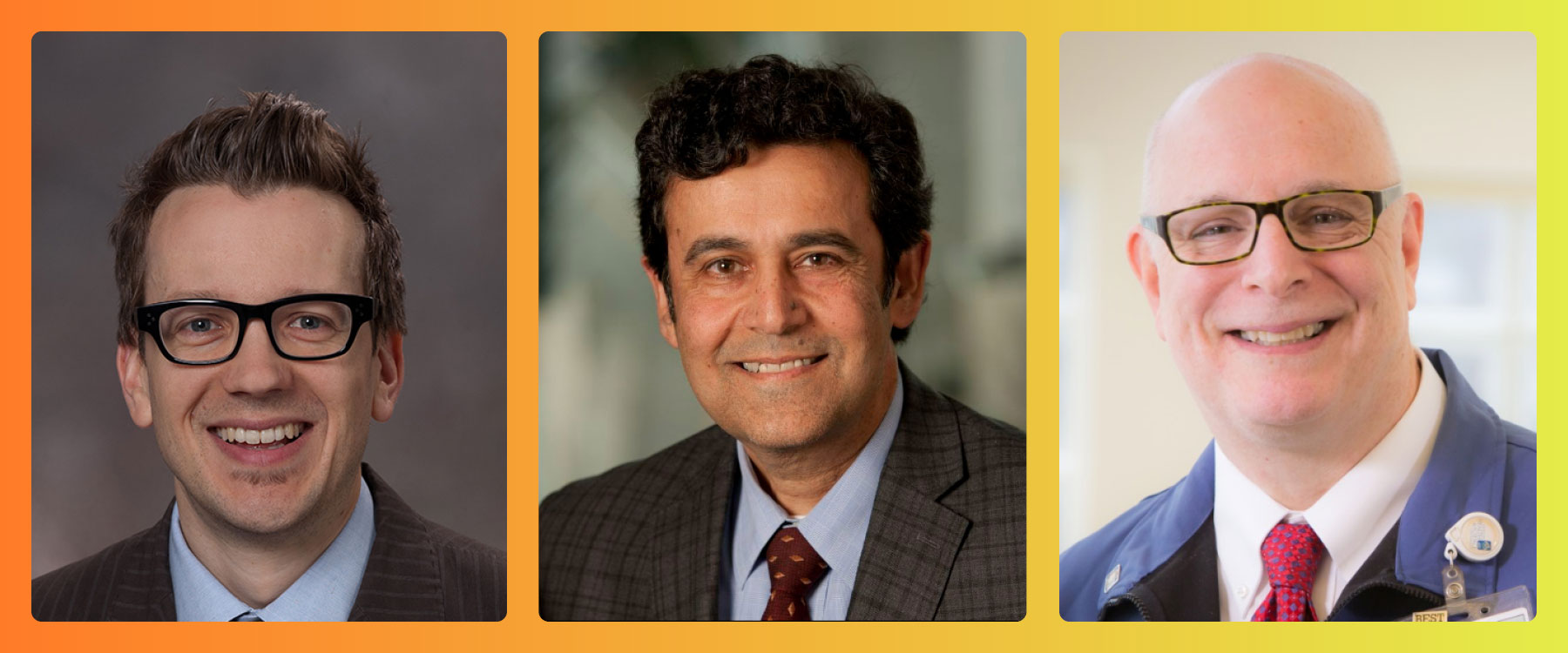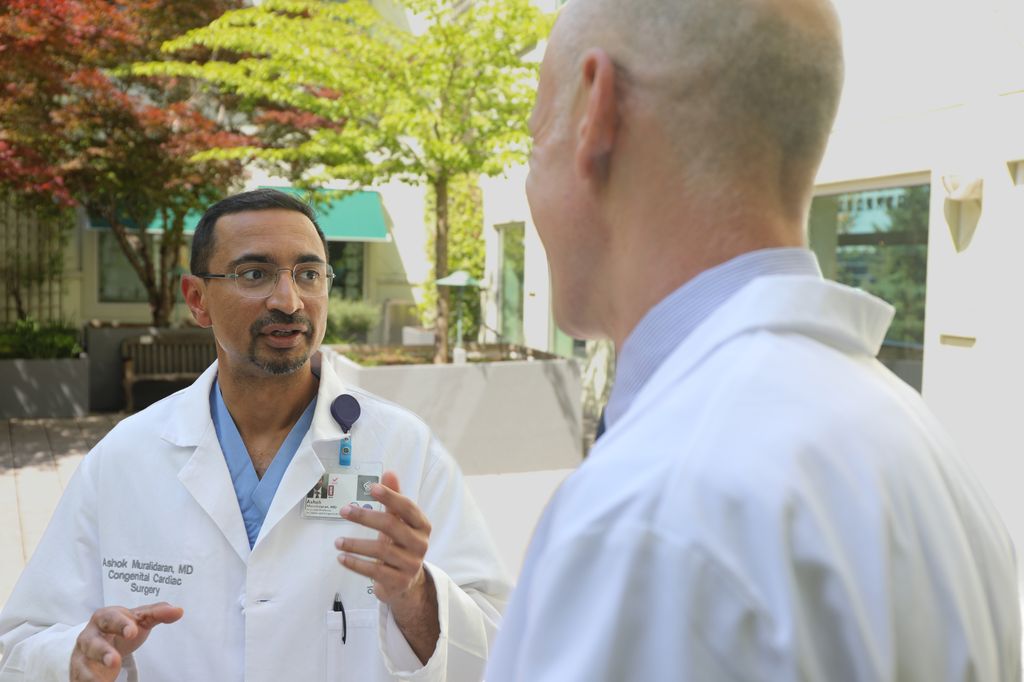The nation has never seen a mental health crisis like the one our kids and teens now face. OHSU is meeting the challenge head-on through groundbreaking research, expanded services and ambitious outreach.
By Willow Bacon / Illustrations by Chelsea Pham
Worried sick
No matter what decade you grew up in, your teenage years were probably rough. However, today’s generation of teenagers have unprecedented challenges to navigate — and it’s taking a profound toll on their mental health.
The numbers are staggering. According to the CDC, 42% of U.S. high schoolers reported experiencing persistent feelings of sadness or hopelessness in 2021. Nearly 1 in 5 of them seriously considered suicide.
At the local level, the problem is even more acute. Currently, Oregon ranks as one of the worst states for youth who are struggling with mental illness. It has the third-highest rate of teen addiction. And, according to a national survey of child well-being, 73% of Oregon parents say their child would benefit from some form of mental health care.
Too many kids in crisis, not enough care
Just as the need has skyrocketed, the supply of specialized mental health services in Oregon has plummeted. Part of the problem stems from a chronic workforce shortage in mental health treatment centers, where low pay and high stress create high rates of turnover. The state’s lack of investment in behavioral health services over the last 20 years has widened the care gap even further.
“Beginning in 2003, and escalating in the past eight years, Oregon lost more than 200 mental health residential beds for youth ,” said Ajit Jetmalani, M.D., who directs the division of Child and Adolescent Psychiatry at OHSU and is a consultant to the Oregon Health Authority (OHA). “Statewide, there are now only four residential treatment centers for youth with mental health needs; we have the lowest number of psychiatric hospital beds per capita in the nation; we have very few residential beds for substance use disorders; and waiting lists are weeks or months long for some programs.”
Big feelings, big problems
While mental health disorders can affect anyone at any age, teenagers are especially vulnerable. That’s because the connections between the emotional part of their brain and the decision-making and regulatory center are still developing — and not always at the same rate.
No one knows this better than Bonnie Nagel, Ph.D., director of OHSU’s Center for Mental Health Innovation. Her research focuses on understanding the development of emotional networks in the brain and how aberrations in those systems can impact mental health during the adolescent years.
“Adults tend to think more with the prefrontal cortex, which guides our judgment and impulse control,” Nagel explained. “However, the frontal lobe is still maturing in teens, so they tend to be more emotional and reactive in the way they process information. When you have a heightened emotional response and an inability to put the brakes on those emotions, it can contribute to serious problems like depression, addiction and suicidality.”
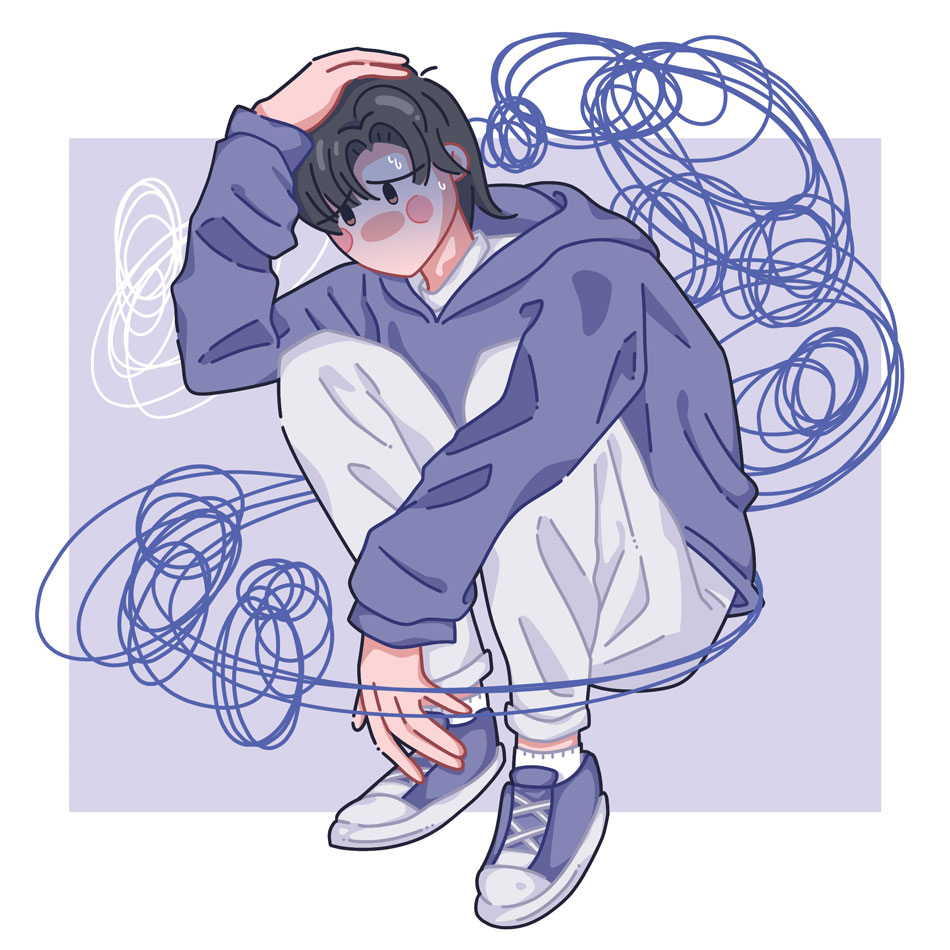
For teenagers already struggling with amplified feelings, the stress of recent history only added fuel to the fire.
“There have always been struggles for children who have experienced adversity in their life,” explained Jetmalani. “But since 2008 or so, economic upheaval, racial injustice, social upheaval and division and the rise of social media really impacted their emotional resilience.”
And then the COVID-19 pandemic happened.
“The lack of social connection and loss of structure escalated things to a level that no one anticipated,” said Liz Marx, a social worker on the OHSU Child and Adolescent Psychiatry team. “Now kids are coming in with really intense symptoms and behaviors that we haven’t seen before.”
When a child does show up at the emergency department (ED) in crisis, Marx or another social worker is there to conduct risk assessments, employ de-escalation strategies and connect families to resources beyond the hospital. She also works with the medical team to design an individual support plan for each young patient to guide their recovery once they go home.
“Our goal is to ensure that follow-up happens within seven days, which can be incredibly challenging given the lack of access to mental health care in our communities,” she acknowledged.
Meeting the crisis on our doorstep
Across the board, OHSU providers agree: The youth mental health crisis is a complex problem that requires a multifaceted solution.
“We not only need to serve our patient population here at OHSU more effectively, but we also need to reach out and support the rest of the state as Oregon’s only academic medical center,” explained Jetmalani.
Here’s how OHSU is accomplishing both.
Advancing research
OHSU is currently involved in two major federal initiatives to study the development of psychopathology in young minds. One is the largest study of adolescent brain cognitive development ever funded by the National Institutes of Health (NIH). The other one studies pregnant mothers and newborns to understand how perinatal and early childhood influences our mental health outcomes.
“To be a part of both of those is a really big deal,” said Nagel. Her lab has also been conducting studies of Portland-area youth for the past 18 years, with aims toward identifying neurobiological and psychosocial markers of risk for addiction and depression.
“When we better understand how to predict risk and escalation of mental health problems in children and adolescents, we can deliver more targeted prevention and intervention efforts,” she said. “One of our primary goals is to take our scientific findings and use them to inform care.”
Expanding the team
With the help of donor support and a grant from Care Oregon, OHSU recently funded new positions in child psychiatry, psychology and Child Life therapy. They also expanded the adolescent medicine team to better support patients with eating disorders and tripled the number of social workers to ensure consistent coverage in the ED at OHSU Doernbecher Children’s Hospital.
“Back in 2020, there was only one social worker on the team,” pointed out Marx. “Now we can provide daily coverage.”
Emphasizing outreach
To help boost access to high-quality mental health care across Oregon, OHSU’s Oregon Psychiatric Access Line about Kids (OPAL-K) includes free, same-day psychiatric consultations for pediatricians. In addition to offering practical advice, the program also provides valuable clinician education.
Further afield, the team partners with the State of Oregon to help kids in foster care, consults with schools to improve social and emotional supports for students and works with the OHA to implement mental health programs for youth and families statewide.
Prioritizing prevention
Of course, the best way to address mental health crises is to prevent symptoms from developing in the first place. And the opportunities to intervene occur earlier than you might think. Studies show that infancy is a crucial time for emotional development and, without a strong initial bond, children are less likely to grow up to become happy, resilient adults.
To help promote these early attachments, OHSU psychologists, researchers and nurse-midwives developed a mindfulness-based training program for at-risk expectant mothers. Proven to reduce the risk of depression and strengthen the bond between mother and baby, Mindful Moms Training can help set an infant up for a lifetime of emotional well-being.

Empathy and advocacy: what you can do
According to Marx, we can all do our part to support youth mental health — and that starts with removing the stigma around mental health conditions.
“Mental health is health,” she said emphatically. “It is not separate, because we are a whole human and experience not only physical health concerns, but mental ones, too. It’s important to change how we talk about that.”
Marx says advocacy is another critical piece of the puzzle, especially if you’re the parent of a teen that’s struggling. “Reach out to your state representative, write to the governor, call local policymakers and ask them to prioritize youth mental health services,” she advised. “Your voice needs to be heard because it will help us build a mentally healthier future for our kids.”
